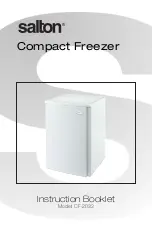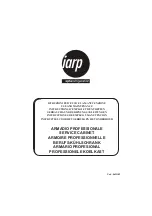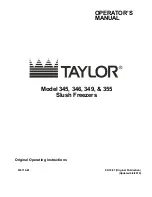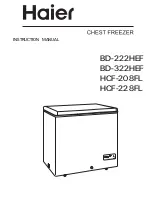
3. Let the Freezer stand upright for approximately 2 hours before plugging
in to the power source. This will reduce the possibility of a malfunction
in the cooling system from handling during transportation.
4. This Freezer is designed to be free standing. It was not designed for
recessed or enclosed area installation.
5. Place your Freezer on a floor that is strong enough to support the Freezer
when it is fully loaded.
6. Locate the Freezer away from direct sunlight and sources of heat (stove,
heater, radiator, etc). Direct sunlight may affect the acrylic coating and
heat sources may decrease cooling efficiency.
7. Ensure there is a minimum 20 cm (8”) clearance on both sides,10 cm (4”)
at the back wall and 30 cm (12”) above the unit for proper air circulation.
NOTE:
If you are installing your Freezer next to a fixed wall, leave sufficient
space on the hinge side to allow for the door to swing open.
8. Level the Freezer by adjusting the legs at the bottom. Turn the Leg clockwise
to raise that side of the Freezer or turn counterclockwise to lower that
side. While adjusting the Legs, have someone push against the top
of the Freezer to take some weight off the front leveling legs.
NOTE:
To help with door closure, position legs with a 1/8" (3 mm) tilt
to the back.
9.
DO NOT
use in any location not properly insulated or heated, e.g. garage
etc. Your Freezer was not designed to operate in temperatures below
12.8°C (55°F). In extreme cold ambient temperatures the Freezer will
not perform properly. Avoid locating the Freezer in damp or moist areas.
Excessive moisture may cause frost to form quickly on the evaporator.
This would require more frequent defrosting of the Freezer.
10. Make sure all shelves and other parts listed in the Description of Parts
are in place.
11. Once the Freezer has been plugged in, allow the Freezer’s interior to cool
for 2-3 hours before putting food into the compartments.
4




























